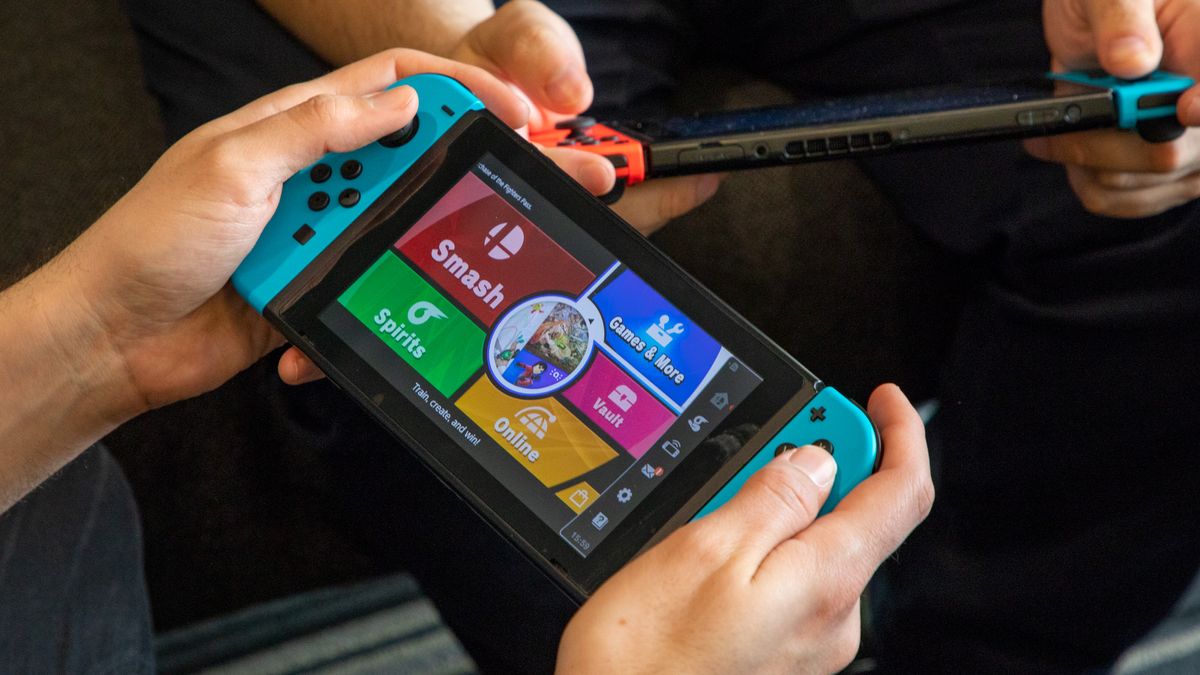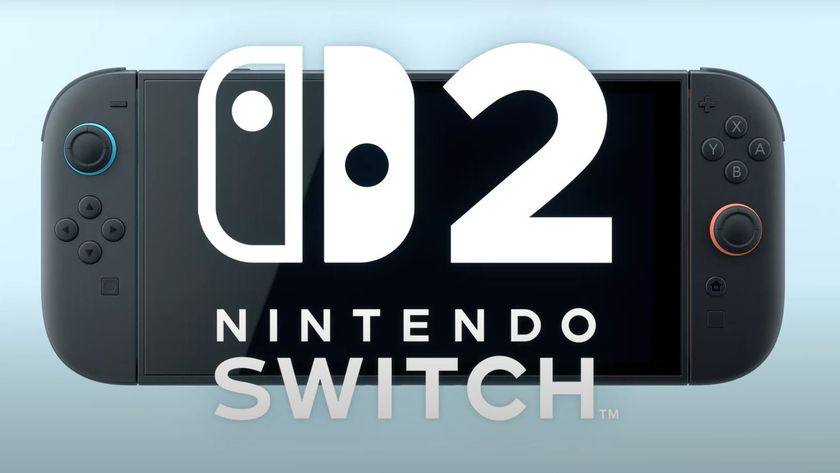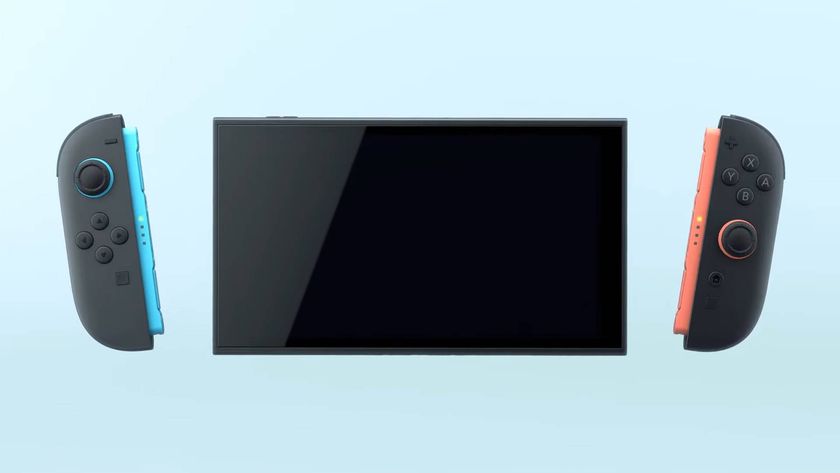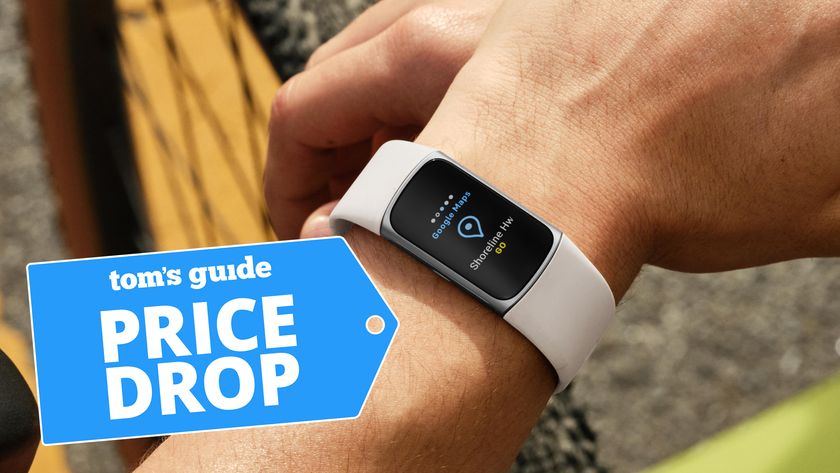Tom's Guide Verdict
The Nintendo Switch is a fantastic console for all kinds of gamers, even if you're not a Nintendo fan.
Pros
- +
Three play modes make it convenient to use wherever
- +
Excellent variety of available games
- +
Smartly designed controls
Cons
- -
Graphics are worse than rivals' offerings
- -
Online membership features are inconsistent across games
- -
Battery life of original model is short
Why you can trust Tom's Guide
Even though the Nintendo Switch is now several years old, it's still just as popular as its newer, more powerful rivals. With some of the best game franchises as exclusives and some unique hardware, it's a console you can't ignore.
Although it began life alone, the Switch has been joined by some friends. There's now the Nintendo Switch Lite for smaller, handheld-only gaming, and the Nintendo Switch OLED with its brighter display and new dock design. There's still a place for the basic Switch though, and likely will be until we end up with a full-blown Nintendo Switch 2 (and rumors peg a next-gen Switch for launch later this year)
This could have been a tough time for Nintendo, given that Sony and Microsoft have just released their next-gen PS5 and Xbox Series X consoles. But with runaway successes like Animal Crossing: New Horizons, remasterings of classic games such as the recently released Super Mario 3D All-Stars, an increasing number of third-party games from developers big and small, as well as completely unique experiences like Nintendo Labo or Mario Kart Live, it feels like the Switch won't be in trouble as Sony and Microsoft transition from one console generation to the next.
Nintendo Switch: Price and availability
The standard Nintendo Switch was originally launched in March 2017, with the revised version debuting in July 2019. It's available with either Neon Red and Neon Blue or gray Joy-Con controllers, and has a list price of $299.99 (£279.99). There never tend to be huge discounts on Switch consoles, even during big sales, but you can sometimes find it with a few dollars or pounds off when it's bundled with one or more games. For comparison, the Switch Lite costs $199.99 (£199.99), and comes in a choice of more pastel color options for the whole console. The Nintendo Switch OLED costs $349 (£309), and comes in black-and-white only.
You can buy the Switch from many popular retailers, including Amazon U.S., Best Buy, GameStop, Target and Walmart in the United States; or Amazon, Argos, Game and Currys or the Nintendo Store in the U.K.
Nintendo also offers some limited-edition Switches with special designs, for example, the Animal Crossing: New Horizons-themed one below. There have also been themed consoles for Pokémon, The Legend of Zelda, Mario and Monster Hunter.
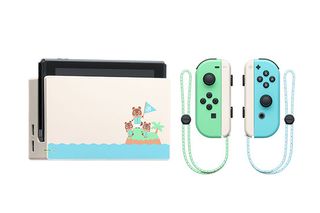
Whichever version you choose, make sure you check our best Nintendo Switch deals to find the best bundle at the best price where you are.
There has been a spike in demand over the past 18 months for the Switch as people searched for a new pastime during national lockdowns around the world. While the stock shortages have mostly ended at this point, we have a guide on where to buy the Nintendo Switch if you're still struggling to find a console that is in stock and not had its price jacked up by resellers.
Nintendo Switch: Design
Like most modern consoles, the Nintendo Switch has a fairly unremarkable design: rectangles mixed with a few softer curves, all rendered in matte plastics. You can choose the Neon color option, whose blue and red Joy-Con controllers give it a bit more personality, or the plainer all-gray version which gives a more cohesive look to the console. Either way, the centerpiece of the Switch is a gray rectangle with the display on it.
The dock, a rather dull rectangle of black plastic by default, is more interesting than its appearance would indicate. There's a space for the Switch to slide into, which contains a hidden USB Type-C connector, plus a port for the AC adapter to attach. The side and back of the dock contain a total of three USB ports for plugging in accessories and an HDMI output to connect to your monitor or TV, covered by a molded flap that aims to keep your cables tidy. (See our recommendations for the best gaming TVs to find the best match for the Switch)
Mechanically, however, the Switch is very smart. With the Joy-Cons attached to its side rails, the console behaves like a large handheld. Alternatively, you can slide the Joy-Cons off and use them separately in tabletop mode. When you play this way, you can lay the Switch flat, or prop it up on its built-in stand. Finally, there's TV mode, where the console plugs into the included dock to play your games on a separate display.
This is the only way you're able to play your games at their maximum 1080p resolution (in handheld mode, they default to 720p), but the console's portability is very useful. It's how many other Switch users and I tend to play. Handheld mode is so prevalent that Nintendo's newer Switch Lite cannot dock to a TV at all.
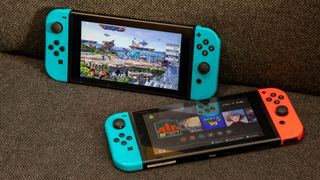
The console uses game cards for its physical media, which you insert into a covered port on the top of the system. You'll also find the power button, a 3.5-millimeter jack for attaching headphones or speakers and a volume button on the Switch's top edge.
Size: 4 x 9.4 x 0.55 inches
Weight: 0.88 pounds
Processor: Nvidia Tegra
Resolution: 720p handheld/1080p docked
Screen: 6.2 inches
Storage: 32 GB (expandable)
Battery: 9 hours
On the bottom you'll find the USB Type-C charging port, which draws power into the console's 4,310 mAh internal battery, either directly from the included power adapter, or via the docking station, filling up in around 3 hours. If you lift up the kickstand on the back of the console, you'll also find the microSD card slot, which allows you to expand your downloadable game storage.
Nintendo Switch: Specs
With the Joy-Cons attached, the Switch measures 4 x 9.4 x 0.55 inches (10.1 x 23.8 x 1.3 centimeters) and weighs 0.88 pounds (around 400 grams), making it the smallest and lightest main console of this generation. The built-in display is a 720p LCD screen and is also a touch screen, with the processing handled by an Nvidia custom Tegra CPU.
Both Joy-Con controllers use rechargeable batteries, estimated to have a 20-hour life and to charge to full capacity in around 3.5 hours. You can power up the Joy-Cons by either plugging them into the side rails in the main Switch console or into various specially designed accessories, most of which are sold separately. (The system comes with a single Joy-Con holder, which approximates the look and feel of a traditional controller.)
The Nintendo Switch is not as powerful as the PlayStation 4 or the Xbox One, let alone the PS4 Pro or Xbox One X. However, thanks to its popular exclusive franchises and unique play opportunities, the Switch doesn't have to match the competition's graphical abilities to draw in players.
Nintendo Switch: Controls
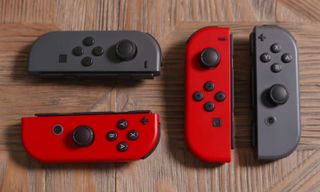
The Joy-Cons are as versatile as the console itself. You can use them together as two halves of a single gamepad, or turn them on their sides to use them as two separate controllers (minus a pair of shoulder buttons) for local co-op and multiplayer gaming.
You'll find HD Rumble in the Joy-Cons for in-game feedback, and an accelerometer and a gyroscope for motion control in both Joy-Cons. However, in the right Joy-Con there's an additional IR sensor, which you can use to control certain games, and an NFC sensor for Nintendo's Amiibo figurines. These unlock extra content in specific titles.
The controllers in the box are accompanied by a few accessories. These include the Joy-Con straps, which slide onto the sides of the controllers to give you a more secure grip when you're using the motion controls, as well as more comfortable shoulder buttons if you're using single controllers.
There's also the Joy-Con Grip, which lets you slide both controllers into a more familiar gamepad shape. This may be good for players who are used to PlayStation or Xbox controllers. But despite playing on a PlayStation 4 for most of this console generation, I rarely use the Grip. Using the Joy-Cons separately is surprisingly comfortable.
Nintendo sure loves peripherals though, as there are lots of other unique ways to play with the Switch. The cardboard-based Labo toys allow you to build both pre-set and custom creations that use the Joy-Cons or the Switch console itself to give the toys extra functionality. Furthermore Mario Kart Live gives you control of actual mini go-karts that you can drive around your home using the Switch.
Nintendo Switch: Multiplayer and online
If you want to play first-party Nintendo games online (this includes games like Super Smash Bros. Ultimate and Mario Kart 8 Deluxe), back up your saves in the cloud, play NES and SNES games, or access the companion smartphone app, you'll have to subscribe to Nintendo Switch Online.
Switch Online has some peculiar characteristics. You don't need to pay for multiplayer for every game, but on the other hand, only certain games support cloud saves. The smartphone app is also necessary for online voice chat, as the console itself can't do this.
The prices for Nintendo Switch Online are $3.99 per month, $7.99 for three months and $19.99 for 12 months, with a fourth "family" option of $34.99 per month for up to eight Nintendo accounts in the same household.
If you want to use your Switch only for local multiplayer, then you don't need to pay for membership. You can pair up to four Joy-Cons to a single Switch console, but you can also connect up to eight consoles together locally for massive multiplayer matches.
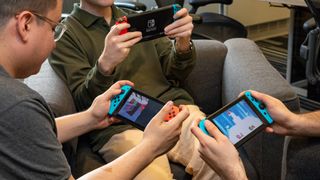
In April 2020, approximately 160,000 Switch users were affected by a data breach that allowed cybercriminals to make illegal purchases on accounts that didn't have two-factor authentication (2FA) enabled. If you are an owner who believes they are affected, contact Nintendo Support to open an investigation into any unusual activity on your account. If you are planning to buy or have just bought a Switch, make sure you enable 2FA on your account from the Settings menu.
Nintendo Switch: Game library
Games come either as physical game cards or as downloaded games from the Nintendo eShop.
If you want to download games, the Switch has 32GB of internal storage, which is enough for a handful of games. But if you want a big library, you'll either need to take advantage of the microSDHC or microSDXC card slot, or rely on physical games, which take up less (but not zero) space on the Switch's HDD.
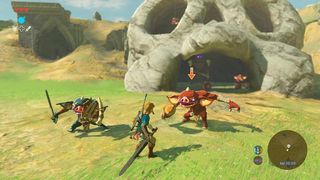
As for the games available, Nintendo has some of the most famous franchises in gaming history as part of its lineup. One of the most notable initial releases was the epic The Legend of Zelda: Breath of the Wild. Nintendo quickly followed this with the lighthearted platformer Super Mario Odyssey, fighting game Super Smash Bros. Ultimate, and monster-hunting RPGs Pokémon Sword and Pokémon Shield and the upcoming Pokémon Brilliant Diamond and Shining Pearl remasters.

There are also more big-budget games from beyond the Nintendo brands, such as The Witcher 3: Wild Hunt, The Elder Scrolls V: Skyrim, Overwatch, Doom (2016), Crysis Remastered and recently Apex Legends. Additionally, the Switch is home to a thriving indie game collection, represented by games such as Untitled Goose Game and Celeste. You can learn more about these favorites and more on our best Switch Games list.
As mentioned above, If you subscribe to Nintendo Switch Online, you also get access to classic NES and SNES titles, allowing you to make the most of Nintendo's high-quality back catalog of games. Alternatively, Nintendo is irregularly releasing boxed and digital remasters of its old games, such as the Super Mario 3D All-Stars collection of Super Mario 64, Super Mario Sunshine and Super Mario Galaxy. It's a fantastic way to enjoy the classics for a second time, or to try them out as a newcomer if you weren't around for the original release.
Nintendo Switch: Battery life
The launch Nintendo Switch (model number HAC-001) is rated to last between 2.5 and 6.5 hours, according to Nintendo's own estimates, while the updated version (model number HAC-001(-01)) — which you can tell from the original via its full-red packaging — manages a much more convenient 4.5 to 9 hours. Make sure this is the version you buy today if you want the best Switch experience, but the battery life is the only difference between the two versions of the console.
In our Switch battery life test, Nintendo's claims seemed to be fairly accurate. Playing an eight-player game of Super Smash Bros. Ultimate until the console died, the launch Switch lasted 2 hours and 45 minutes, while the updated Switch managed 4 hours and 50 minutes. The Switch Lite made it to the 3:50 mark, for reference. All three versions of the Switch will last on a full battery charge for a decent amount of time, but this test just confirms that the original Switch is outclassed by the new Switch and the Switch Lite.
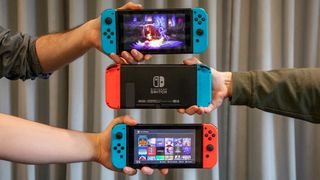
Nintendo Switch vs. Switch OLED
With the Switch OLED having just arrived, you may well be considering whether it's the one you should buy instead of the original model, or if it's worth an upgrade from your current Switch. We have a full Nintendo Switch OLED vs. Original Switch breakdown you can check out, but we'll give you a quick summary here.
If you're a first-time Switch owner, you are likely going to be better off getting the OLED model. The extra $50 you spend gets you worthwhile upgrades in the form of a larger, higher-quality in-built display and longer battery life, plus some handy refinements to the dock and kickstand and double the basic storage to boot. However if you already own a Switch, these aren't enough to justify an upgrade by themselves.
Don't forget also that if you're just after the new dock with its included Ethernet port, then you will be able to buy it separately and use it even if you have an older Switch.
Nintendo Switch review: Verdict
The Nintendo Switch had a very strong start back in 2017 and has only grown stronger since then. More and more non-Nintendo developers are flocking to have their games appear on the platform, and Nintendo has addressed many criticisms of the launch-day console with a new, cheaper form factor in the Switch Lite, an upgrade to the battery life in the refreshed 2019 model and most recently an OLED version with a bigger, brighter screen.
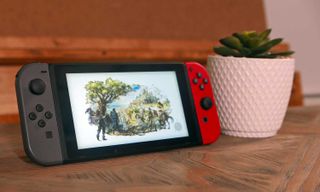
You'll have to accept a loss of graphical capability if you play on the Switch instead of a rival console, and Nintendo's online service, with its confusing features, may accidentally trick people into buying it when it's either unnecessary or unhelpful for the games they play. It's also unfortunate that Nintendo discounts its products so infrequently. It's rare you'll find the Switch on sale, and when it is, it tends to disappear very quickly.
A large group of Switch players decided to buy the console as soon as they knew it was a Nintendo product, due to the build quality and exclusive game franchises that are synonymous with the company. That said, the Switch has one of the widest third-party game libraries ever found on a Nintendo console. Even if you aren't a fan of the first-party Nintendo games, being able to enjoy your favorite RPG, shooter or strategy title on a console that you can play anywhere is a tempting offer. It's for these reasons that the Switch is one of the best handheld gaming consoles you can buy.

Richard is based in London, covering news, reviews and how-tos for phones, tablets, gaming, and whatever else people need advice on. Following on from his MA in Magazine Journalism at the University of Sheffield, he's also written for WIRED U.K., The Register and Creative Bloq. When not at work, he's likely thinking about how to brew the perfect cup of specialty coffee.
